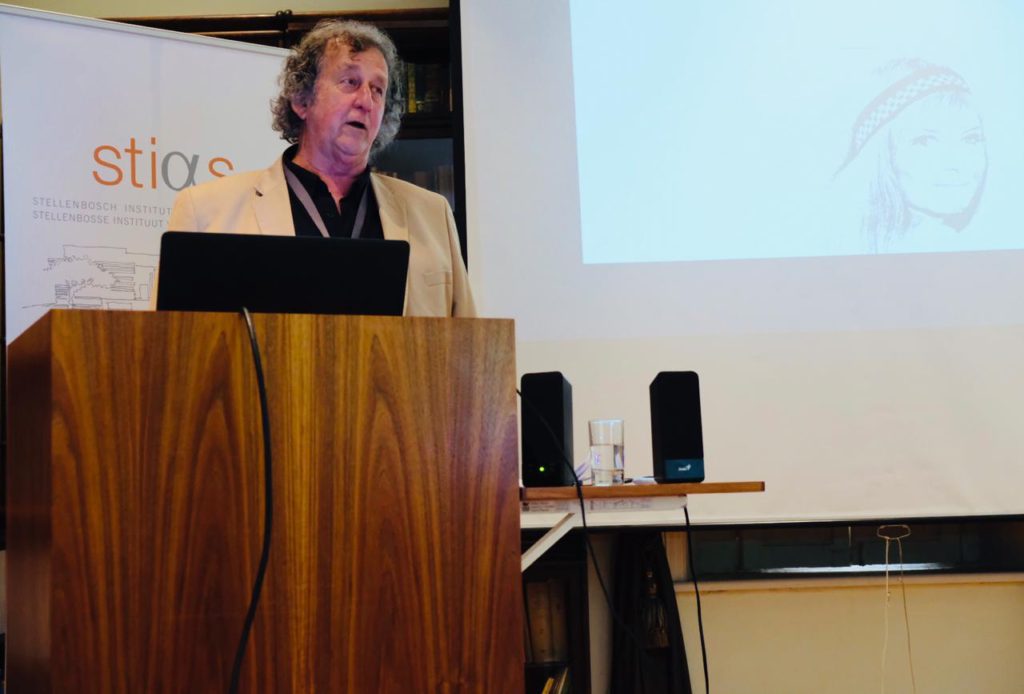The disappearance of an iconic flower child in the Knysna Forest, a fruitless two-week search, mysterious, unconfirmed sightings over many years, the discovery of a body and missing police files – all part of one of South Africa’s unsolved mysteries offering a fascinating glimpse of 1960s hippie counterculture in South Africa.
“She was a marginal figure on the fringes of society,” said STIAS fellow Albert Grundlingh of the Department of History at Stellenbosch University. “Yet as an outsider she also provided a lens through which wider developments could be observed.”

Grundlingh first came across Rosalind Ballingall when a guide mentioned her while he and his wife were touring the Knysna Forest. She popped up again at the Barrydale Hotel where he saw a poster of her from the Scope Magazine. This awaked his curiosity, leading him to track down more at the National Library in Cape Town and subsequently to conduct more detailed research.
Rosalind Ballingall was born in 1948 in Northern Rhodesia to British parents. The family moved to South Africa, initially living in Johannesburg, but by 1968 Rosalind was studying Speech and Drama at the University of Cape Town. In August 1969 while staying in the Knysna Forest with two friends, she simply walked off and disappeared, never to be found again. In the mid-1980s she was legally declared dead.
Grundlingh explained that Rosalind was part of a group called Cosmic Butterfly – to many, she was High Priestess of the group. She lived in the De Waterkant area of Cape Town – at that time a mixed area (similar to District 6). “It included many people on the outskirts of society,” he said. “They led an unconventional lifestyle that included drug use, dabbling in the arts, oriental religions, white magic and meditation, and deep reflections on the meaning of life.”
“The group included many eccentrics and drop-outs – ironically, many of whom were from solid middle-class backgrounds living off family money.”
Grundlingh pointed to some of the broader influences that would undoubtedly have influenced this group including the US hippie culture and its opposition to the Vietnam War along with the introduction of conscription in South Africa in 1967; the rise of Afrikaner nationalism and the increasingly restrictive apartheid state; and, on a more local level, the non-appointment of a black anthropologist at UCT in 1968 which resulted in increased political activism.
However, he described the group as being interested in the “politics of consciousness” rather than specific issues. “I was hoping to find more distinct political connections but that is not coming through from the people I’ve interviewed,” he said. “They seemed to not have had a very coherent philosophy and flitted from one thing to another not committing to anything in particular.”
“They certainly rejected apartheid overall but their’s was very much a bourgeois revolution of middle-class, white, young people, and not seen as indigenous to South Africa”. However, he described them as representing “a distinctive human craving for liberty in a time when life was wracked by insecurity” and a “fleeting but interesting cultural phenomenon”.
Grundlingh is interested in looking at micro history – using a small event to reflect on wider things, and in making a contribution to South Africa’s social history.
“No one equates South Africa with hippies,” he said. “I’m seeking to explain the dynamics of a particular kind of emerging culture and the way it was infused by public mystifications and conceptions. I have two aims – to account for an apparent historical puzzle and to cast light on a forgotten dimension of white social history.”
“Rosalind was a striking figure physically but described as being insecure, depressed and neurotic, and obsessed with the end of the world,” said Grundlingh.
He described the unconventional behaviour of her friends after her disappearance along with prevailing perceptions about hippies as playing an important role in attempts to find her with the police search called off after just two weeks. “The dense, impenetrable forest – the whispering woods – became a co-player in the mystery.”
“For a time hippie-dome in South Africa was equated with Rosalind. She was seen as an elusive flower child. The mystification of her disappearance led some to believe she had sacrificed herself.”
“My analytical thrust is to explain how an embryonic counterculture informed the case. For a brief period Rosalind was elevated to an almost iconic figure, representing wider social concerns irrespective of her actual role and own misgivings at the time. In contrast to the surfeit of books on American counterculture in the late 1960s, South Africa has been less well served. This is not surprising. South Africa was largely on the margins of what happened elsewhere and its historiography has been so dominated by apartheid-related issues that white social history and especially developments that lurked below the surface have, with notable exceptions, not been accorded the same attention. Through micro-history, this case allows us to glimpse, like dying embers in the night, a tiny shaft of light casting shadowy reflections of a fleeting cultural phenomenon.”
In discussion Grundlingh was asked about the links between this story and white politics and culture in South Africa today.
“I’m hesitant to be prescriptive,” he said. “It seemed to be about ‘hippie-ness’ as an outlet rather than an outright rejection of politics or society. There were general but no specific links to politics. The exchange between the races in De Waterkant seems to be mainly around drug use not politics.”
“I certainly don’t want to exaggerate her role. I don’t want to make little fishes talk like whales,” he continued. “There’s something very telling about her life, but I can’t invest it with greater meaning than I can find.”
“We tend to focus on power and the powerful,” he added. “I like to look at the underbelly.”
During his residency at STIAS Grundlingh will also be working on a biography of Frederik van Zyl Slabbert.
Michelle Galloway: Part-time media officer at STIAS
Photograph: Noloyiso Mtembu
